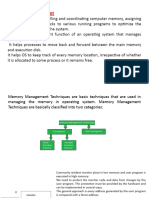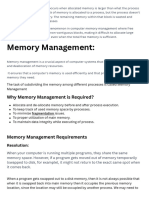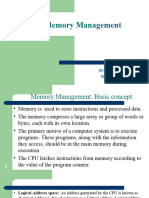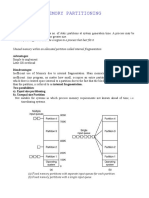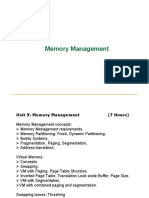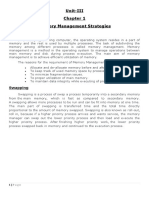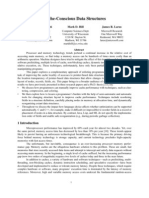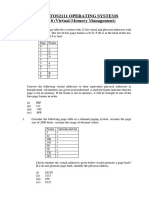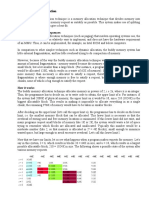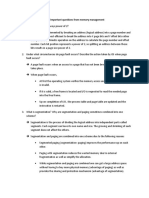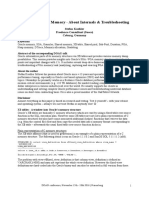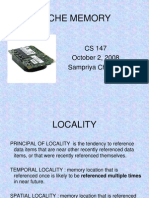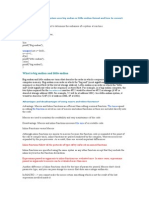0% found this document useful (0 votes)
80 views26 pagesSpos Unit 6
The document discusses memory management, focusing on fragmentation types: internal and external fragmentation, their causes, impacts, and solutions. It also covers fixed and dynamic partitioning, the buddy system, and paging techniques, including TLB for efficient address translation. Additionally, it outlines page replacement strategies such as FIFO and LRU for managing memory in virtual systems.
Uploaded by
johnrocky4678Copyright
© © All Rights Reserved
We take content rights seriously. If you suspect this is your content, claim it here.
Available Formats
Download as PDF, TXT or read online on Scribd
0% found this document useful (0 votes)
80 views26 pagesSpos Unit 6
The document discusses memory management, focusing on fragmentation types: internal and external fragmentation, their causes, impacts, and solutions. It also covers fixed and dynamic partitioning, the buddy system, and paging techniques, including TLB for efficient address translation. Additionally, it outlines page replacement strategies such as FIFO and LRU for managing memory in virtual systems.
Uploaded by
johnrocky4678Copyright
© © All Rights Reserved
We take content rights seriously. If you suspect this is your content, claim it here.
Available Formats
Download as PDF, TXT or read online on Scribd
/ 26





